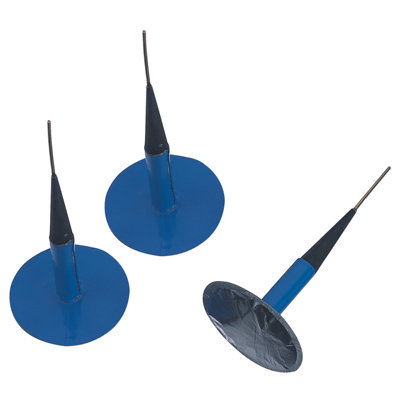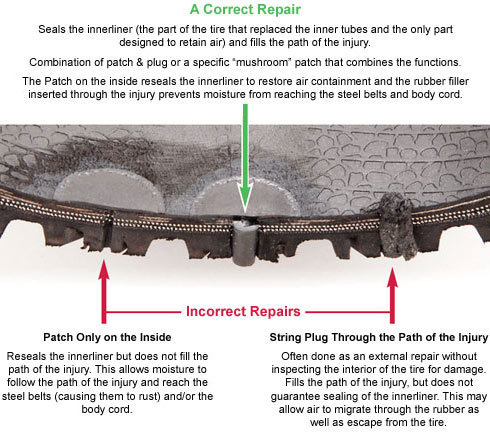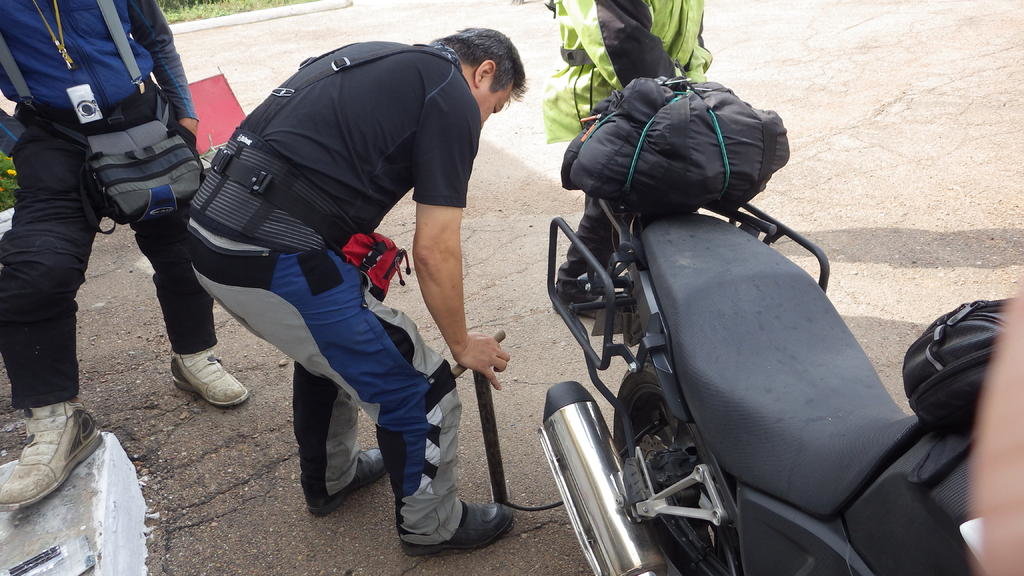Sticky-string plugs are a great for emergency/get you out of jail but are NOT 100% and never should be conceded a
permanent repair as you found out with Glenda tyre .
It's always best when it is convenient to remove the tyre and inspect the inner walls of the tyres for damage cause by running with low pressure or internal damage caused by the reason of the puncture I.E. long nail/screw especially if its near the edge of the tyre.
Remove the old sticky-string Plug and replace it with a mushroom plug.


Stop & Go one of the leading manufacturer of sticky-string Plugs also recommend this action.
And go on further to say .........
7. Should I consider the use of your Patch/Plug #3002 a permanent repair in my motorcycle tire?
Safety experts all agree that a punctured and/or plugged motorcycle tire should be replaced as soon as possible. That is our opinion also.
http://www.stopngo.com/pages/FAQ.html
Some people have other views on this matter like "I been using sticky-plugs all my life and have never had a problem " ?? and run them to end life of the tyre.
Low speed bikes ok I can understand less speed less heat build up in a underinflated tyre,
[FONT="] [/FONT]
[FONT="]But when you are dealing with high speed sports bikes one has to consider the imprecation of one's action.
[/FONT]
[FONT="]The above advise is based on my experiences of owning and running a retail tyre shop for 20 years in the UK [/FONT][FONT="][/FONT]
Advantages of Correct Tire Inflation
Maintaining correct tire inflation pressure helps optimize tire performance and fuel economy. Correct tire inflation pressure allows drivers to experience tire comfort, durability and performance designed to match the needs of their vehicles. Tire deflection (the tread and sidewall flexing where the tread comes into contact with the road) will remain as originally designed and excessive sidewall flexing and tread squirm will be avoided. Heat build-up will be managed and rolling resistance will be appropriate. Proper tire inflation pressure also stabilizes the tire's structure, blending the tire's responsiveness, traction and handling.
Disadvantages of Under inflation
An underinflated tire can't maintain its shape and becomes flatter than intended while in contact with the road. If a vehicle's tires are underinflated by only 6 psi it could lead to tire failure. Additionally, the tire's tread life could be reduced by as much as 25%. Lower inflation pressure will allow the tire to deflect (bend) more as it rolls. This will build up internal heat, increase rolling resistance and cause a reduction in fuel economy of up to 5%. You would experience a significant loss of steering precision and cornering stability. While 6 psi doesn't seem excessively low, remember, it usually represents about 20% of the tire's recommended pressure.
Disadvantages of Over inflation
An overinflated tire is stiff and unyielding and the size of its footprint in contact with the road is reduced. If a vehicle's tires are overinflated by 6 psi, they could be damaged more easily when running over potholes or debris in the road. Higher inflated tires cannot isolate road irregularities well, causing them to ride harsher. However, higher inflation pressures usually provide an improvement in steering response and cornering stability up to a point. This is why participants who use street tires in autocrosses, track events and road races run higher than normal inflation pressures. The pressure must be checked with a quality air gauge as the inflation pressure cannot be accurately estimated through visual inspection.
Link......
http://www.tirerack.com/tires/tiretech/techpage.jsp?techid=1

Any repair attempted without removing the tire from the wheel is improper. Without inspecting the inside of the tire for hidden damage comes the risk of returning a weakened tire to service. Punctures in the tread area that looked repairable have revealed upon further investigation that the object that punctured the tire had been long enough to cut the tire's sidewall from the inside. Without dismounting the tire, the hidden damage would have been missed.
Simply plugging a tire from the outside without removing the tire from the wheel is improper. (If a tire is punctured while off-roading far away from civilization and a spare tire isn't available, a plug may serve as a temporary low speed solution that must be replaced with a proper repair as soon as possible upon returning to the road.)
Additionally, any repair that doesn't completely fill the path the object took through the tire is incomplete. While a patch on the inside of the tire reseals the innerliner, it does not fill the path of the puncture. This will allow moisture to reach the steel belts and/or the casing cords causing them to rust or deteriorate.
There are many different rubber compounds used in a tire. The tire's innerliner uses a special rubber compound that has the ability to better retain air. Once punctured, the innerliner must be cleaned, buffed, cemented, patched and coated to assure its ability to retain air has been restored. Since this can only be done from inside the tire, it's another reason that a plug-only repair is improper.
Continuing to drive on a tire with a slow leak may allow moisture to seep around the object and into the tire. This will reduce the probability that the tire can be repaired properly because the moisture will ultimately reach the internal steel and fabric cords used to reinforce the tire and possibly cause rust and loss of strength. To assure reestablishing a watertight seal the injury must be cleaned with a specially designed cutting drill that removes rust and sizes the injury properly to accept the rubber stem of the patch. Cemented in place, the stem will vulcanize with the tire to help prevent moisture from reaching the tire's reinforcing cords from the outside.
While indoor laboratory tests have shown that freshly punctured and properly repaired speed rated tires can still achieve high speeds, it is not recommended that repaired street tires, or punctured DOT-legal competition tires and racing slicks be used for track events.
How do you know which procedures a tire dealer uses? Ask them! But be aware that if they say they can repair a tire in 10 minutes for under $10 dollars without removing it from the wheel, they aren't following the Rubber Manufacturer's Association procedures. A correctly done flat repair that follows the multi-step repair procedures will take approximately 30 minutes and probably cost around $30. Driving on an improperly repaired tire is dangerous because it can further damage the tire and/or allow its strength to deteriorate over time. An improperly repaired tire driven at high speeds may suddenly fail, causing loss of vehicle control. Additionally, the use of an innertube as a substitute for a proper repair generates additional heat and should not be considered.
Remember a cost of a new tyre is a small price to pay for your safety
Ride safe





















